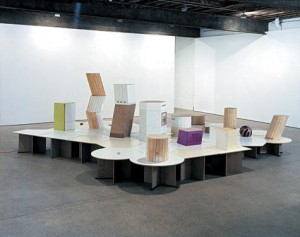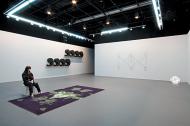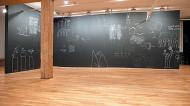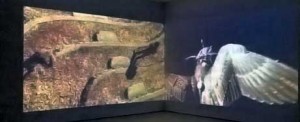For ‘Time Out New York’ Magazine

Given the impenetrable nature of Manfred Pernice’s work, you wouldn’t confuse him for an introspective soul. Despite its title, his latest show does little to change his trademark reluctance to communicate clear meaning. Instead, a mysterious centerpiece sculpture—emblazoned with unexplained dates, dotted with everyday objects and accompanied by giveaway pamphlets stamped DIARY#8212;tentatively suggests that experience is subject to many interpretations.
A few zones of fluorescent green and deep red on the central installation are among Pernice’s few concessions to aesthetic appeal. But for those willing to grasp for associations, a honeycombed-patterned platform suggests an after-hours cafeteria, while empty plinths evoke museum or trade-show displays. If those same pedestals could also be imagined as buildings in a model urban landscape, then a kid’s ball could be a stadium, while a tiny floral tile might be seen as a garden. Who’s to say?
Certainly not Pernice, whose “diaries” mix dates, texts and underwhelming photos of blurred or mundane scenes. One unremarkable photo of a man carrying a bag is captioned EXPRESS YOURSELF, while another image shows the artist with a glazed look in his eyes. Both touch on the challenges of being original, but beg the question of why Pernice can’t provide his audience a few more clues to understanding his work.
As if anticipating such criticism, a sculpture in the back gallery consists of nothing but empty boxes (for cookies, cigarettes, etc.), dated to create a chronicle of the artist’s activities. While appearing to go in a direction diametrically opposed to the rest of the show, it still maintains the same line that artistic identity is ultimately elusive.


